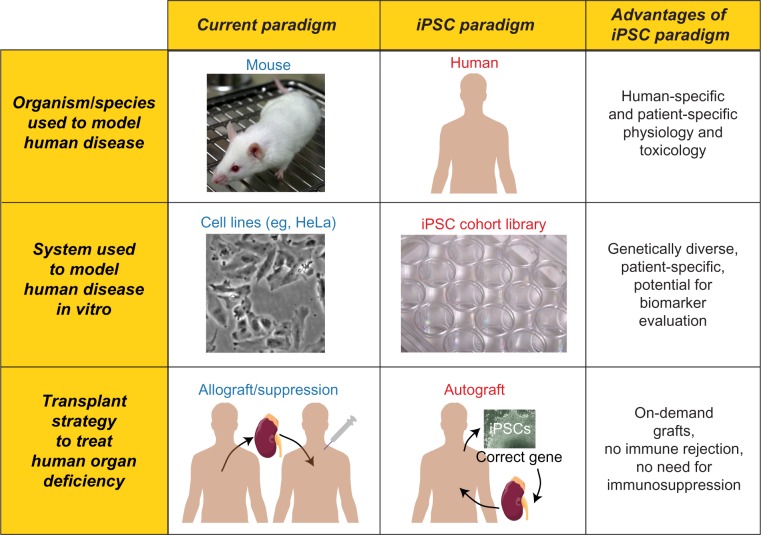Figure 2.
Current paradigms and iPSC paradigms for research and therapeutics. Advantages of the iPSC paradigm are highlighted in the rightmost column. Top row: the current research paradigm relies primarily on nonhuman model species, such as mice, to model human disease. In contrast, the iPSC paradigm enables the study of human pathophysiology in human cells. Middle row: the current research paradigm relies on immortalized cell populations, such as HeLa cells, for disease modeling comparisons in vitro. In contrast, the iPSC paradigm promotes the development of genetically diverse iPSC cohorts/libraries. Bottom row: compared to the current therapeutic paradigm of kidney transplant, iPSC-derived autograft transplantation is envisioned, in combination with gene therapy.
Note: The image of the lab mouse in this figure, created by Rama and obtained from Wikimedia Commons, is reused under a CC-BY-SA license. The image of a multi-well cell culture plate, created by Lilli_M as part of Wikiproject LabSnap 2011, was obtained from Wikimedia Commons and reused under a CC-BY-SA license.

